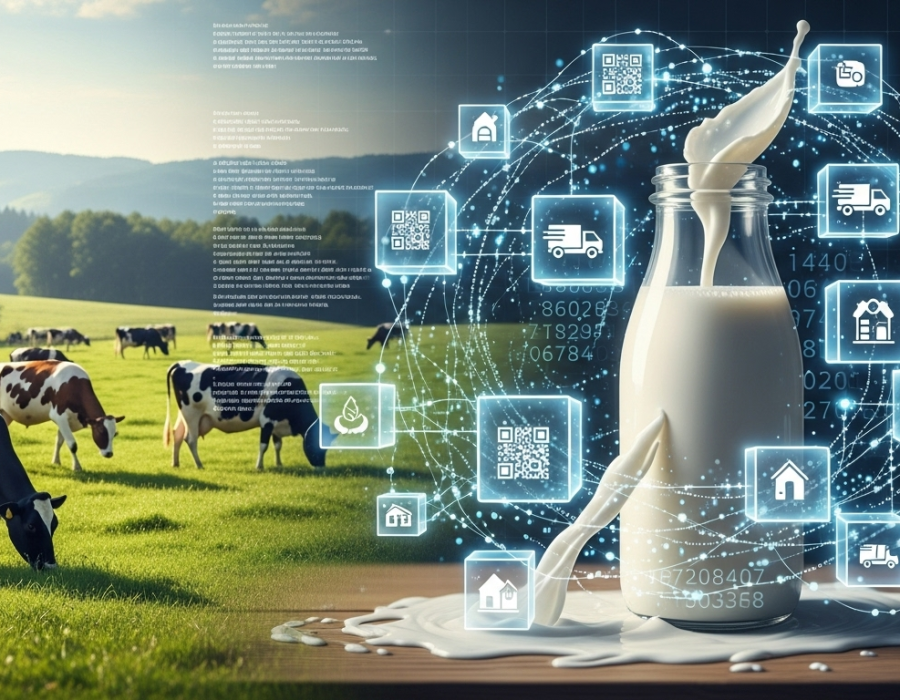Introduction
The dairy industry is massive and intricate. According to the Food and Agriculture Organization (FAO), global milk production hit 930 million metric tons in 2023, feeding billions worldwide. However, inefficiencies, fraud, and a lack of transparency continue to plague the sector, costing it billions of dollars annually.
Enter asset tokenization and dairy tokenization — two powerful innovations using blockchain to create a more transparent, efficient, and trustworthy dairy supply chain. With dairy tokenization, every batch of milk gets a unique digital identity stored on an immutable blockchain, tracking everything from farm origin to store shelves.
What is Asset Tokenization?
Asset tokenization is the process of converting the rights to a physical or tangible asset into a digital token stored on a blockchain. Each token represents ownership or specific details about the asset and can update in real time.
In dairy supply chains, asset tokenization means:
- Assigning a unique token to each batch of milk.
- Storing farm details, quality reports, and processing dates.
- Recording transportation data, including temperature and location.
- Making all records tamper-proof and accessible to stakeholders.
For example, a farm in New Zealand could tokenize 1,000 liters of premium milk. A buyer in Singapore can verify the milk’s origin, quality certifications, and storage history instantly before purchase.
Dairy Tokenization: A Game-Changer for Milk
Dairy tokenization takes asset tokenization and applies it directly to milk and dairy products. It works by creating a digital twin of every milk batch, embedding real-world data into its token.
Here’s how it unfolds:
- At the farm: Milk is collected, tested, and results are recorded on blockchain.
- Processing: Pasteurization, packaging, and expiry data are added.
- Transport: IoT devices feed GPS and cold-chain temperature logs into the blockchain.
- Retail: QR codes on packaging let consumers verify the product’s entire journey.
A Nielsen report found that 75% of global shoppers are willing to pay more for products with verified sourcing, making dairy tokenization a competitive advantage for brands.
Current Challenges in the Dairy Supply Chain
The dairy industry faces critical issues:
- Food fraud: Counterfeit or mislabeled products are widespread, especially in premium dairy categories.
- Cold chain breakdowns: Roughly 17% of dairy products spoil before reaching consumers (FAO).
- Regulatory delays: Manual record-keeping slows compliance reporting and audits.
These challenges harm profits, consumer trust, and sustainability efforts.
How Blockchain Solves These Problems
By integrating blockchain, the dairy supply chain gains:
- Immutable Records: Once data is added, it cannot be altered, preventing fraud.
- Smart Contracts: Automate payments when pre-set conditions are met, reducing delays.
- Real-Time Tracking: Live updates on product location and temperature.
- Universal Access: All stakeholders see the same verified data, improving collaboration.
Blockchain in supply chain applications like IBM Food Trust have shown that product recall times can drop from days to seconds when blockchain tracking is in place.
Market Growth & Adoption
According to MarketsandMarkets, blockchain in agriculture is set to grow from $0.4 billion in 2023 to $4.2 billion by 2028, with dairy being a key driver. Early adopters like Walmart China track dairy products using blockchain, boosting customer confidence and reducing operational inefficiencies.
Benefits of Dairy Tokenization
- Consumer Trust: Shoppers can scan a code to verify product authenticity.
- Fraud Prevention: Makes counterfeiting almost impossible.
- Faster Payments: Smart contracts release funds upon verified delivery.
- Sustainability Tracking: Records carbon footprint and ethical sourcing.
- Better Compliance: Simplifies audits and meets regulatory requirements quickly.
Challenges to Implementation
- Initial Costs: Blockchain and IoT setup require investment.
- Farmer Adoption: Some producers may resist tech adoption.
- Regulatory Uncertainty: Laws for blockchain-based trade are still evolving.
Despite these hurdles, technology costs are dropping, and awareness is growing.
The Future of Dairy Tokenization
By 2030, experts predict that over 40% of global dairy exports will be tokenized. As consumer expectations for transparency rise and blockchain adoption accelerates, tokenization will shift from being an innovative experiment to a standard industry practice.
Milk won’t just be a commodity — it will be a verified, traceable, and data-rich product from farm to fridge.





Comments